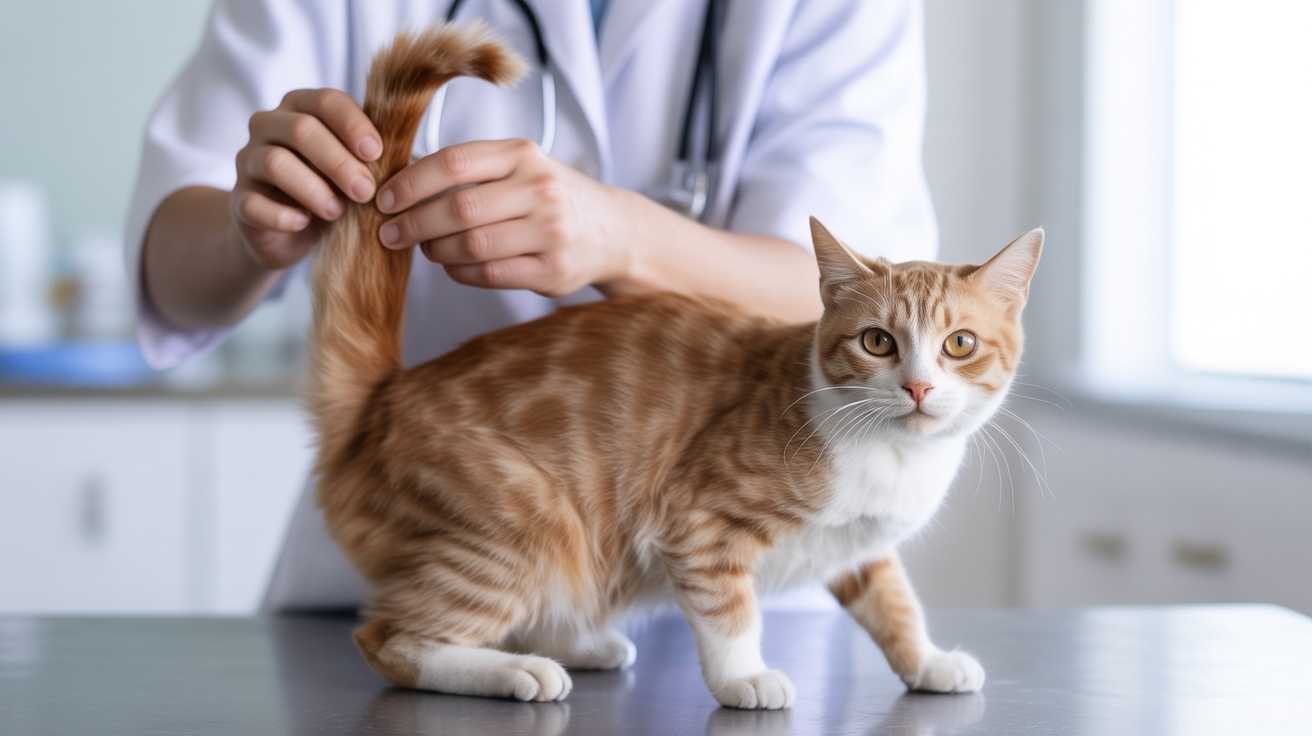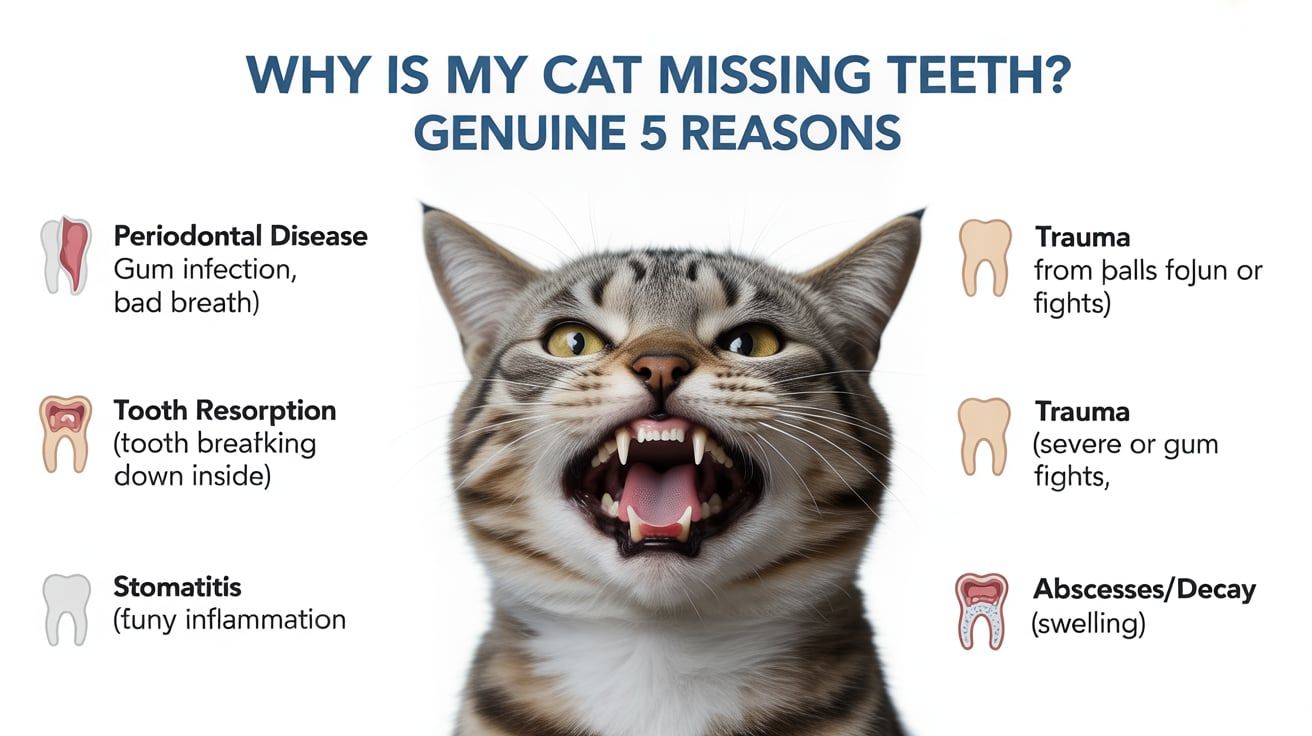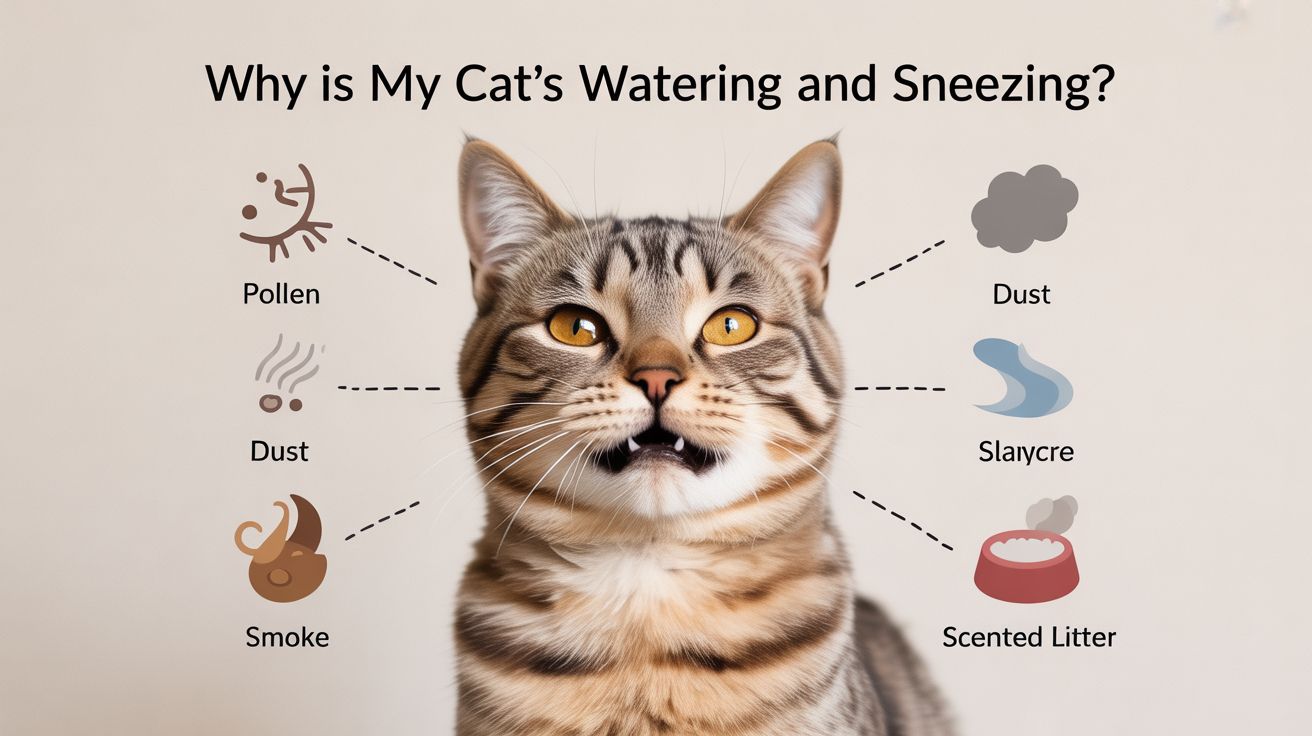Why is my cat losing hair by her tail? Top causes, such as fleas, allergies, stress, and skin issues, can help protect your cat’s coat and health.
Why Is My Cat Losing Hair by Her Tail?
If you’ve ever asked yourself, “Why is my cat losing hair by her tail?” you’re not alone. Tail hair loss, also called feline alopecia, is a common concern for cat owners and can signal anything from minor irritation to an underlying medical problem.
A bald patch near the tail might point to fleas, flea allergy dermatitis, or even a fungal infection like ringworm in cats. In other cases, allergies, stress-related overgrooming, or conditions such as stud tail may be to blame.
Understanding the causes and when to seek veterinary help is key to restoring your cat’s comfort and coat health.
Why Is My Cat Losing Hair by Her Tail? 9 Top Reasons
| Cause | What It Means | Signs to Watch |
|---|---|---|
| Fleas / Flea Allergy | Reaction to flea bites or saliva | Itching, scratching, bald patches |
| Ringworm (Fungal) | Contagious fungal skin infection | Circular bald spots, scaly skin |
| Allergies | Food or environmental triggers | Redness, irritation, overgrooming |
| Stud Tail | Oil buildup near the tail base (mostly in males) | Greasy tail, odour, hair thinning |
| Stress Overgrooming | Anxiety or boredom causes licking | Thin fur, irritated skin |
| Mites / Parasites | Skin irritation from mites or lice | Itching, crusts, patchy fur loss |
| Hormonal Imbalance | Thyroid or other hormone disorders | Thinning coat, general fur loss |
| Poor Diet | Lack of nutrients affecting coat health | Dull coat, shedding, weak fur |
| Skin Infections | Bacterial or yeast infection | Red bumps, odour, and localised baldness |
What It Looks Like — Signs to Watch
- Watch for bald patches on or near the tail.
- Notice thinning fur around the tail base.
- Check for greasy buildup that may signal stud tail.
- Look for redness, scabs, or small bumps from scratching (miliary dermatitis).
- Observe if your cat licks the same spot repeatedly, leaving skin bare or irritated.
- These changes often point to parasites, allergies, or stress as the underlying cause.
Common Causes of Tail Hair Loss
- Endocrine disorders: Hormonal imbalance can cause systemic feline alopecia.
- Fleas & Flea Allergy Dermatitis (FAD): Intense itching leads to bald patches near the tail.
- Ringworm in cats: Fungal infection causes circular hair loss, sometimes with scaly skin.
- External parasites (mites, mange, ticks): Persistent scratching damages fur and skin.
- Allergies (food or environmental): Trigger overgrooming and scabs at the tail base.
- Stud tail, also known as tail gland hyperplasia, refers to a condition characterised by a greasy buildup at the base of the tail, which weakens the hair in that area.
- Psychogenic alopecia: Stress-driven overgrooming causes bald spots.

How Vets Diagnose Tail Bald Spots
- Accurate tests are crucial when asking, “Why is my cat losing hair by her tail?”
- Flea comb examination: Detects fleas or flea dirt at the tail base.
- Wood’s lamp & fungal culture: Helps confirm ringworm in cats.
- Skin scraping & cytology: Identifies mites, mange, or infections.
- Blood tests (thyroid/hormonal): Rule out endocrine disorders causing feline alopecia.
- Diet elimination trials: Used to uncover food allergies.
- Behavioural assessment: Checks for stress or psychogenic alopecia.
Treatment & Home Care
Correct treatment depends on why my cat is losing hair on her tail—never use human remedies without veterinary advice.
- Flea control: Use vet-approved spot-on or oral preventives, clean bedding.
- Ringworm in cats: Antifungal shampoos or oral meds plus home disinfection.
- Allergies: Hypoallergenic diet, antihistamines, or omega-3 supplements.
- Stud tail: Medicated shampoos to manage greasy buildup.
- Psychogenic alopecia: Reduce stress, add enrichment, and consider pheromone diffusers for support.
- Hormonal disorders: Managed with targeted vet-prescribed medications.
When to See the Vet
If you’re still asking, “Why is my cat losing hair by her tail?”, it’s time for a vet exam to prevent infection or chronic skin issues.
- Rapid spread of bald patches or worsening hair loss.
- Open sores, pus, or bleeding at the tail base.
- Severe itching or pain that interrupts sleep or eating.
- Lethargy, fever, or appetite loss alongside fur loss.
- No improvement after flea control or allergy management.

Prevention & Long-Term Care
- By staying proactive, you’re less likely to wonder, “Why is my cat losing hair by her tail?” again.
- Year-round flea prevention keeps parasites from triggering tail hair loss.
- A balanced diet with omega-3s supports skin and coat health.
- Routine vet checkups catch early signs of feline alopecia.
- Stress reduction & enrichment prevent psychogenic alopecia from overgrooming.
- Regular grooming & hygiene reduce buildup linked to stud tail.
FAQs
Q1: Can tail hair grow back once it’s lost?
Yes, in most cases, if the cause is treated, hair regrowth occurs in weeks to months.
Q2: Is tail hair loss in cats contagious?
If caused by ringworm, yes. Other causes, like fleas or allergies, are not directly contagious.
Q3: Should I use a cone to stop my cat licking her tail?
A cone provides temporary relief, but addressing the root cause is essential.
Q4: Can stress really cause bald patches on my cat’s tail?
Yes—psychogenic alopecia from anxiety can lead to overgrooming.
Q5: How do I know if it’s fleas or allergies?
Flea allergy shows scabs near the tail and back; food/environmental allergies often include itching on the face and ears, too.

Hi, I’m Sana Sajid!I’m the voice behind CatsCare.blog, sharing my 10+ years of hands-on cat care experience. With a diploma in animal care, I offer practical tips, trusted advice, and easy-to-follow guides to help keep your cats healthy and happy.
When I’m not writing, I spend time with my own cats or exploring the latest developments in feline health. Follow CatsCare.blog for expert insights and real cat stories!






3 thoughts on “Why Is My Cat Losing Hair by Her Tail? 9 Top Reasons”